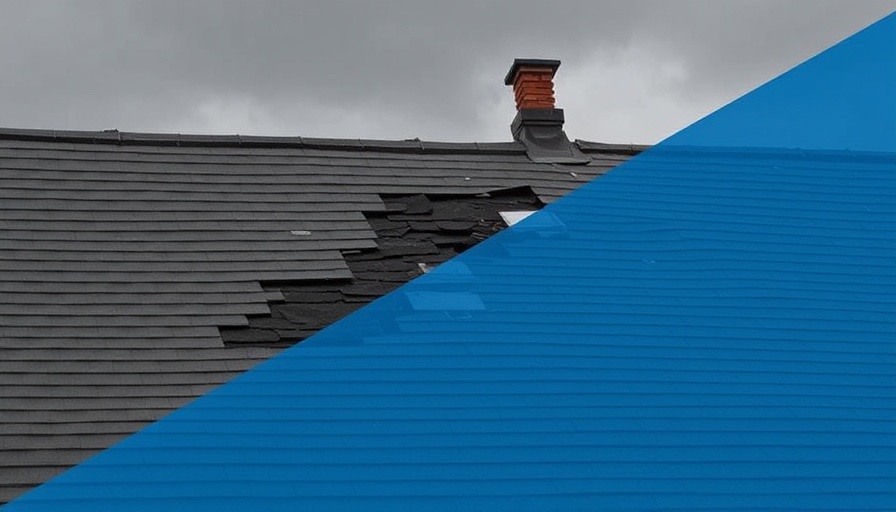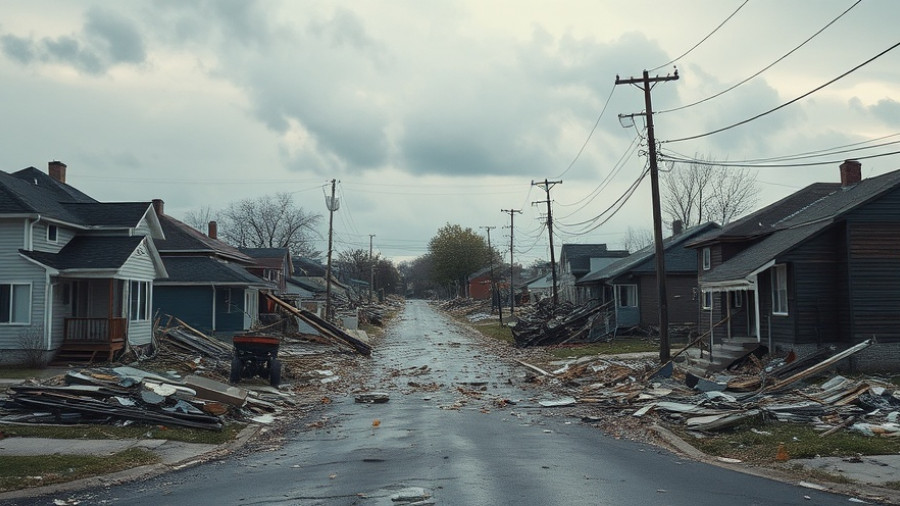
Understanding Roof Damage Assessment in Wisconsin
Following a storm, homeowners in Wisconsin face the daunting task of assessing roof damage, which can often mean the difference between a successful insurance claim and a repair nightmare. The process that insurance companies use to evaluate roof claims hinges on careful inspections, policy nuances, and the key distinction between storm damage and preexisting conditions. With winter storms creating havoc not just from snow accumulation but from hail and strong winds, it’s crucial for homeowners to understand how to navigate the insurance claim process effectively.
The Initial Inspection: A Critical Step
When homeowners report roof damage, the insurance company typically sends an adjuster to conduct an inspection. This is where the initial evaluation occurs—adjusters look for visible signs of damage such as missing shingles, hail impressions, or wind-lifted materials. They also consider age and condition of the roof before the storm strikes, as normal wear and tear is frequently not covered by insurance. To fortify claims, the Wisconsin Office of the Commissioner of Insurance encourages homeowners to document damage meticulously with photographs and written records.
Distinguishing Between Storm Damage and Wear
A key factor in claim approval is whether damage is categorized as a result of a storm or due to the roof's age. Normal wear—such as curled shingles—is typically excluded from coverage, while signs like multiple missing shingles or specific hail damage are likely to be accepted as storm-related. Disputes may arise here, as insurers need to evaluate if the damage was caused by a storm-inducing peril, such as hail or wind, or if it was a result of preexisting wear.
The Claims Process: What Homeowners Should Know
Understanding the specifics of the claims process is essential for homeowners. Insurers often pay for repairs when damage is minor and localized but will opt for complete roof replacement when there is extensive damage. Wisconsin law mandates timely evaluations and payments once liability is established, turning the spotlight onto the homeowner's role in ensuring their claim is well-prepared and documented. For many, this means being proactive in gathering receipts of repairs, taking detailed photos, and meticulously reviewing the policy's terms to define what is covered.
Avoiding Common Pitfalls in Filing Claims
Making mistakes during the filing process can significantly delay claims or result in reductions in settlements. Homeowners commonly wait too long to notify insurers, which can lead to unnecessary complications. Many policies expect damage to be reported within a month of the incident, and delays can jeopardize the claim's legitimacy. Moreover, failing to collect sufficient documentation, failing to hire qualified contractors, or not being present during adjuster inspections can muddle the process, leading to lower settlement amounts or even denied claims.
Proven Strategies for Successful Claims
Several steps can enhance the likelihood of a favorable outcome in roof claims management. Homeowners should be vigilant about documenting all storm damage with high-quality photographs and written descriptions, and ideally, engage a roofing contractor to provide detailed estimates and inspection reports. This professional insight can lead to better communication with the insurance adjuster and prompt more accurate assessments. Reviews indicate that adjusting strategies often involve thorough familiarity with insurance stipulations, along with a steadfast approach to collecting and presenting compelling evidence.
The Importance of a Reviewable Insurance Policy
Wisconsin homeowners should thoroughly review their insurance coverage to understand exclusions and limitations related to roof damage. Policies often contain specific sections detailing covered events, and familiarizing oneself with these terms empowers homeowners to advocate for their rights. Storm-related incidents that are documented well can lead to smoother settlement processes. Furthermore, understanding whether one’s insurance follows replacement cost or actual cash value policies is vital, as this knowledge will influence what settlement might ultimately look like.
Final Thoughts on Claims and Repairs
When traversing the complexities of roof damage insurance claims, knowledge and preparation are invaluable. Homeowners can bolster their negotiating power by ensuring a comprehensive understanding of their policies, acting promptly in reporting damage, and maintaining detailed records throughout the process. These measures are not just recommended; they are essential for protecting one’s investment and navigating the claims process successfully. With the right steps in place, homeowners can secure the support necessary to restore their roofs and peace of mind following tumultuous storms.
 Add Row
Add Row  Add
Add 




Write A Comment